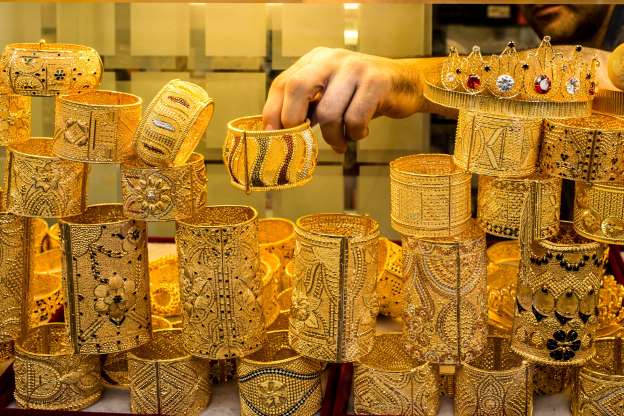Money
Planning to invest in gold or FDs? Know the tax aspects that will affect your return

Risk-averse investors avoid fluctuations in the capital invested and always look for financial instruments that give fixed and preferably guaranteed return. However, factors like taxation and inflation impact the seemingly fixed return. So, before investing you should know how much of your fixed return would be eaten up by income tax.
Gold
Gold is one of the most preferred assets of Indian investors. Apart from its use as jewellery, gold also acts as a buffer through value appreciation at the time of economic and market turmoil. So, it is advised that gold should comprise around 20 per cent your total investment portfolio.
Following are the tax implications of investing in gold or gold bonds.
Gold bullion and ornaments:
Short-term capital gain (STCG) is taxed at the marginal rate in which the investor falls
After holding for three years, the return is treated as long-term capital gain (LTCG) and is taxed at 20 per cent after indexation
Gold bonds
Small interests received during the investment period are taxed at slab rates
Short-term capital gains are also taxed at marginal rates
After holding for one year, the return is considered as long-term capital gain and is taxed at 10 per cent
No indexation benefit is allowed on LTCG as gold bonds are interest-bearing instruments
Debt/fixed income instruments
Apart from gold, the most preferred investment avenues of risk-averse investors are fixed deposits (FDs) and other fixed income and debt instruments.
Following are the taxation rules on such instruments.
Savings bank accounts
Interest up to Rs 10,000 is tax-free, and any interest above this limit is taxed at slab rate
As TDS is not deducted on savings interest, the tax payer has to mention it in the ITR
Fixed deposits
The interest received is taxed at slab rate without any limit
TDS will be deducted at 10 per cent, if interest in any financial year crosses Rs 10,000, unless Form 15G or 15H is submitted. However, in the 2018 Union Budget, it has been proposed that the tax-free limit for senior citizen will be increased to Rs 50,000 for interest earned on FDs and Post Office deposits.
Recurring deposits
The entire interest received is taxed at slab rate
TDS is not deducted on RD interest and it is the investor’s duty to reveal it in ITR
Tax-free bonds
As the name suggests, the entire interest on such bonds will be tax-free
Short-term capital gain is taxed at marginal rates if the bond is sold before one year
After holding for one year, the LTCG is taxed at 10 per cent
No indexation benefits are allowed as such bonds are interest-bearing instruments
Normal bonds and debentures
Entire interest received is taxable at slab rate
TDS is cut at 10 per cent, if interest in any financial year crosses the Rs 5,000-mark
STCGs on bonds and debentures are taxed at marginal rates
After holding for one year, the returns are considered as LTCGs and are taxed at 10 per cent
As investments in bonds and debentures are considered as interest-bearing instruments, no indexation benefits are allowed
-

 How to4 weeks ago
How to4 weeks agoHow to Check if Your Tax Consultant E-Verified Your Return Properly
-

 Health3 weeks ago
Health3 weeks agoWhat Happens When You Drink Black Coffee Every Day for 30 Days?
-

 Technology3 weeks ago
Technology3 weeks agoPerplexity AI Now on WhatsApp: Ask Questions, Get Summaries, Generate Images & More
-

 Money3 weeks ago
Money3 weeks agoJSW Cement IPO Opens: GMP, Price, Subscription Status, Review & Should You Invest?
-
![ChatGPT 5 Launched: Who Can Access It, How to Use It & Is It Free? [2025 Guide]](https://www.regularstation.com/wp-content/uploads/2025/08/2DAdWvVdE7ivGpRiqcLMfU-400x240.jpg)
![ChatGPT 5 Launched: Who Can Access It, How to Use It & Is It Free? [2025 Guide]](https://www.regularstation.com/wp-content/uploads/2025/08/2DAdWvVdE7ivGpRiqcLMfU-80x80.jpg) Technology3 weeks ago
Technology3 weeks agoChatGPT‑5 Launched: Who Can Access It, How to Use It, and Is It Free?
-

 Cryptocurrency3 weeks ago
Cryptocurrency3 weeks ago5 Cryptos That Could Challenge Solana (SOL) And Grow Your Portfolio 5000% In 2025
-

 Health3 weeks ago
Health3 weeks agoCoconut Water Isn’t for Everyone: 6 People Who Should Avoid It
-

 Health1 week ago
Health1 week ago5 Best Protein Sources for Vegetarians and Non-Vegetarians






